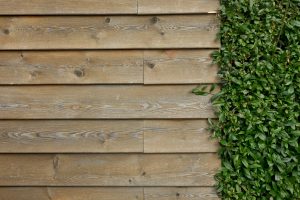Debate between Varnish and Stained Wood

Whether it is solid wood furniture, bamboo, wood flooring or other various hand-made timber boards, the consistency in the quality of the products and how they are polished by the belt is very important. It becomes extremely detrimental to maintain your wooden furniture by either staining it or using a varnish. This article outlines the benefits of both and a comparison between the two.
Varnishing The Wood
The varnish is a coating that is composed of resin as the main film-forming substance and solvent. Coated on the surface of the object and dried to form a smooth film, showing the original and natural texture of the wood surface. It is a type of paint that does not contain coloring substances. When applied to the substrate, it forms a transparent paint film with protective, decorative, and special properties and benefits.
Advantages Of Using Varnish
- Varnish generally contains protection functions to reduce ultraviolet radiation.
- The original varnish materials are used primarily for high temperature curing one-component lacquer: polyurethane or polyester, refinish clearcoat material used primarily natural cured two-component acrylate type.
- The varnish is beautiful and has a glossy concentration
- It penetrates below the surface of the wood and makes it easy to repair and maintain.
- It has a simple and elegant appearance, however, natural varnish can work to give you a rustic look.
- Varnish can protect the color from fading, mainly because the color is darker, giving a natural luster.
- Varnish is a natural and environmentally friendly product, similar to timber oil.

Dyed or Stained Wood
The resources of natural wood are becoming more and more limited and rising prices are putting great pressure on furniture manufacturers. Using wood dye technology or stain can achieve the same appearance effect as solid wood, and at the same time, can ease demand and save costs.
Dyeing wood can inherit the texture of natural veneer without destroying its natural characteristics. On the contrary, it can increase the impact resistance of its surface, and increase the decorative impact of wood. Wood dyeing is being widely studied in the field of production for wooden furniture.
Advantages Of Dyed or Stained Wood
- One of the main reasons why more and more people choose dyed whole wood or artificially dyed veneers instead of using natural wood is cost.
- Using relevant processing technology and equipment to dye natural wood or natural veneer can retain the original touch of natural wood and texture, can also beautify the visual effect, and greatly save raw materials and the environment.
- With the continuous improvement of environmental protection requirements, in the process of implementing the dyeing process, manufacturers will use high-tech processing technology to strictly follow the national standards for the release of formaldehyde.
- There are several options for different stained or dyed timber colours.
Which Is Better, Dye Or Varnish?
One of the main reasons why many people choose varnish is because it can cover the defects of wood or traces of nails. After brushing and applying the varnish, it leaves a thickness, which can enlarge the original texture of the wood to look more glossy and eye-catching. Later, a paint film will be formed to protect the surface, but because of this, the paint film isolates the wood from contact with air and moisture. This, however, restricts the wood breathability, and therefore it may crack over time.
Staining will not achieve the effect of varnish, but can instead magnify the defects of wood. After it is painted, there is no sense of thickness, but it does penetrate deep into the wood allowing the wood to breathe. It gives an appealing and modernized look. The paint film is formed on the surface of the wood so that it is not easy to crack or fall off.
The benefits of dyed or stained wood have greater advantages, it can be readily available and relatively cheaper than varnish. It does not require any professional skills and generally applied no more than once or twice. Moreover, the surface of the furniture does not need to be primed beforehand, just polished with a scouring pad, leaving it smooth, clean, and free of dust. When brushing, keep the room well ventilated.







